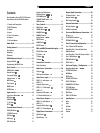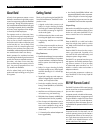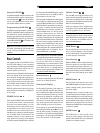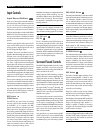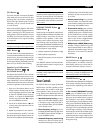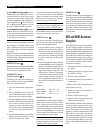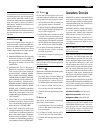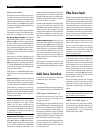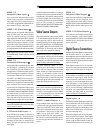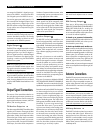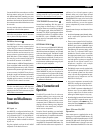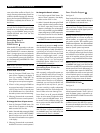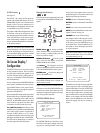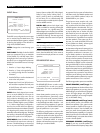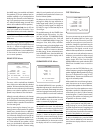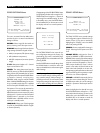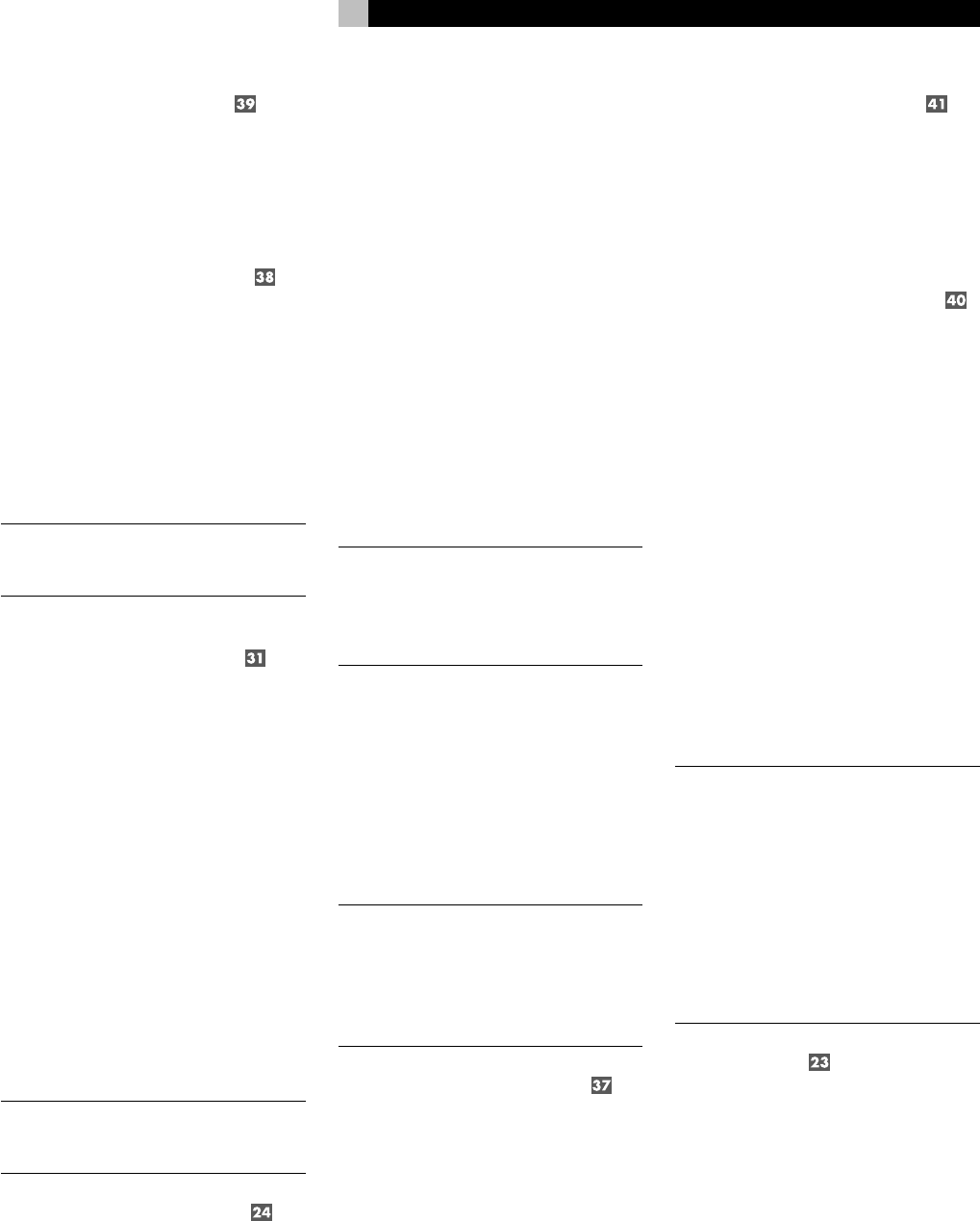
19
VIDEO 1–5
Composite Video Inputs
If you use the RCA composite video connec-
tions for a source component, connect the RCA
video
output
of the source component to one
of the video
inputs
labeled COMPOSITE IN.
Use a standard 75 ohm video cable.
VIDEO 1–5 S-Video Inputs
S-Video signals use a special cable which di-
vides the video signal into several elements
carried by separate conductors, providing
higher quality than the standard RCA composite
cables. If you choose to use an S-Video input
connection from a source component, connect
the S-Video
output
of that component to one
of the
inputs
on the RSX-972 labeled S-VIDEO
IN using a standard S-Video interconnect cable.
NOTE
: Signals from S-Video inputs will only
be available at the S-Video outputs to the TV
monitor.
VIDEO 1–2
Component Video Inputs
Component Video connections split the video
into three signals – luminance (Y) and sepa-
rate chrominance (CB and CR) elements, al-
lowing delivery of a reference-quality picture.
Each of these signals is carried by a separate
75 ohm video cable with RCA connectors.
The VIDEO 1 and VIDEO 2 source inputs pro-
vide an option for using Component Video con-
nections. If you choose to use Component Video
input connection from a source component,
connect the three Component Video
outputs
of that component to the corresponding
inputs
on the RSX-972 labeled COMPONENT VIDEO
IN. Make sure that you connect each of the
three cables to the proper connector (Y to Y,
CB to CB, and CR to CR) and that you use
standard 75 ohm video interconnect cables.
NOTE
: Signals from Component Video inputs
will only be available at the Component Video
outputs to the TV monitor.
5.1 Channel Audio Inputs
A set of RCA inputs accepts six channels of
analog signals from a 5.1 channel processor
or source component. When selected with the
front-panel 5.1CH button or remote EXT IN
button, this input overrides any other audio
input signal.
Use audio interconnect cables to connect the
six outputs of the source component to the RCA
jacks labeled 5.1 CH INPUT, making sure that
you observe proper channel consistency, i.e.
connect the right front channel to the R FRONT
input, etc. You will make six connections
(FRONT RIGHT/FRONT LEFT/REAR RIGHT/
REAR LEFT/CENTER/SUBWOOFER).
Video Source Outputs
Three of the available video sources (VIDEO
1, 2 and 3) feature outputs that allow you to
send a signal to a VCR or other source com-
ponent for recording. The recording signal avail-
able at all of these outputs is selected globally
using the REC button on the front-panel or the
ZONE button on the remote and is indepen-
dent of the source selected for listening.
NOTE
: Recording signals are available at all
source outputs, including the source selected
for recording. As a general rule, you should
not attempt to record to the component whose
signal has been selected for recording.
The record outputs for VIDEO 1, 2, and 3
include a pair of RCA analog audio outputs
plus a choice of composite video or S-Video
output. To hook up a video component for re-
cording, you will need to connect it to both
analog audio outputs and to your choice of
video outputs. Keep in mind that composite
video input signals will not be available at S-
Video record outputs and vice versa.
NOTE
: All connections (both input and output)
from a source component must be made con-
sistently to the same set of connections. For
example, if you designate a VCR as VIDEO
1, you must connect all of its input and out-
put signals to the VIDEO 1 connectors.
VIDEO 1–3 Audio Outputs
Using standard audio interconnect cables,
connect the left and right channel RCA audio
outputs
from the RSX-972 to the audio
inputs
on the source component. Make sure that you
are consistent. If you hook up a VCR to the
VIDEO 1 inputs, hook up the VIDEO 1 out-
puts to the same VCR. Also make sure that the
left channel is connected to the LEFT connec-
tors and the right channel to the RIGHT con-
nectors.
VIDEO 1–3
Composite Video Outputs
If you choose to use the RCA composite video
connections for a source component, use a
75 ohm video interconnect cable to connect
the RSX-972’s RCA video
output
(labeled COM-
POSITE OUT) to the RCA video
input
on your
VCR.
VIDEO 1–3 S-Video Outputs
If you choose to use S-Video connections for
a source component, use an S-Video cable to
connect the RSX-972’s S-Video
output
(labeled
S-VIDEO OUT) to the S-Video
input
on your
source component.
Digital Source Connections
The RSX-972 provides digital connections which
may be used in place of, or in addition to,
the analog audio input and output connections
described in the previous sections. These con-
nections include five digital inputs and a digital
output for recording.
These digital connections can be used with
any source component that supplies a digital
signal, such as a DVD player or CD player.
NOTE
: A digital connection means that the
D/A converters in the RSX-972 will be used
to decode the digital signal, rather than the
source component’s internal D/A converters.
In general, you would use digital connections
for a DVD player or other component that
supplies a Dolby Digital or DTS signal. How-
ever, if you are connecting a high-end Rotel
CD player with sophisticated internal D/A
converters, you might prefer to use analog
audio connections to the RSX-972.
Digital Inputs
The RSX-972 accepts digital input signals from
source components such as CD players, sat-
ellite TV receivers, and 5.1 channel Dolby
Digital or DTS signals from DVD players. The
built-in D/A converter senses and adjusts to
the correct sampling rates.
There are five digital inputs on the rear panel,
three coaxial and two optical. These digital
inputs can be assigned to any of the input
sources using the INPUT MENU screen de-
scribed later in this manual. For example, you
English



